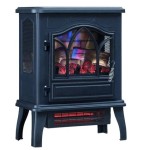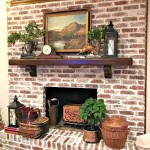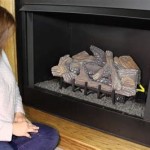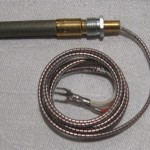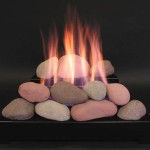How to Install Propane Gas Fireplace Logs
Propane gas fireplace logs offer a convenient and aesthetically pleasing alternative to traditional wood-burning fireplaces. They provide the visual appeal of a flickering fire without the associated mess, smoke, and maintenance. Installing a set of propane gas fireplace logs is a project most homeowners can undertake with careful planning and attention to detail. This article provides a comprehensive guide to safely and effectively installing propane gas fireplace logs.
Before commencing any installation, it is paramount to consult the manufacturer's instructions specific to the log set being installed. These instructions provide crucial details regarding venting requirements, clearances, and specific installation procedures that may vary between models. Disregarding the manufacturer's guidelines can lead to unsafe operation and void the warranty.
Safety is of utmost importance when working with gas appliances. Prior to beginning the installation, ensure the gas supply to the fireplace is completely shut off. This typically involves locating the shut-off valve on the gas line leading to the fireplace and turning it to the "off" position. Double-check that no gas is leaking by using a gas leak detector or by applying a soap and water solution to the gas connections and looking for bubbles. If any gas leak is detected, immediately contact a qualified gas technician.
Gather all necessary tools and materials before starting the installation. These commonly include: pipe wrenches, a pipe sealant suitable for propane gas, a level, a drill (if necessary for securing the log set), a screwdriver set, a gas leak detector or soap and water solution, safety glasses, work gloves, and the propane gas log set itself. Ensure that all tools are in good working condition.
Key Point 1: Preparing the Fireplace
The first step involves preparing the existing fireplace for the log set. The firebox should be thoroughly cleaned of any ashes, debris, or existing grates from a previous wood-burning fireplace. A clean firebox ensures proper airflow and optimal performance of the gas logs. Inspect the existing gas line and shut-off valve for any signs of damage or corrosion. If any issues are identified, contact a qualified gas technician for repair or replacement before proceeding.
Carefully examine the fireplace's venting system. Propane gas logs require proper ventilation to exhaust combustion byproducts safely. Generally, there are two types of venting systems: vented and vent-free. Vented gas logs must be installed in a fireplace with a fully functional chimney that allows for the safe expulsion of exhaust gases. Vent-free gas logs, on the other hand, are designed to operate without a chimney; however, they require specific safety features such as an oxygen depletion sensor (ODS) to shut off the gas supply if oxygen levels become dangerously low.
Determining the type of venting system required for the chosen log set is crucial. Using a vented log set in a vent-free fireplace or vice versa can lead to serious safety hazards, including carbon monoxide poisoning. Confirm the compatibility of the log set with the existing fireplace's venting system by consulting the manufacturer's instructions and local building codes. Vent-free log sets are often subject to stricter regulations and may not be permitted in all jurisdictions.
If the existing fireplace has a damper, it needs to be properly positioned based on the type of log set being installed. For vented log sets, the damper should be permanently locked in the open position to ensure adequate ventilation. This prevents the build-up of dangerous gases within the home. In contrast, vent-free log sets typically require the damper to be closed or partially closed to maximize heat output. Refer to the manufacturer's instructions for specific guidelines on damper positioning.
Key Point 2: Connecting the Gas Supply
Connecting the gas supply involves attaching the gas line from the fireplace to the burner assembly of the log set. This step requires meticulous attention to detail to prevent gas leaks. Begin by ensuring that the gas supply is still turned off at the shut-off valve. Apply pipe sealant specifically designed for propane gas to the threads of all gas fittings. Follow the manufacturer's instructions regarding the correct type and application method of the sealant.
Carefully connect the gas line to the burner assembly, tightening the fittings securely with pipe wrenches. Avoid over-tightening the fittings, as this can damage the threads and cause leaks. Use two pipe wrenches – one to hold the existing gas pipe and the other to tighten the fitting – to prevent twisting or straining the gas line. Once the connections are made, double-check that all fittings are properly aligned and tightened.
Slowly turn on the gas supply at the shut-off valve. Listen for any hissing sounds, which could indicate a gas leak. Apply a gas leak detector or soap and water solution to all gas connections. If bubbles form, it signifies a leak. Immediately turn off the gas supply and tighten the leaking fitting. Repeat the leak test until no leaks are detected. If the leak persists after tightening the fitting, it may be necessary to replace the fitting or the gas line.
After confirming that there are no gas leaks, proceed to test the burner assembly. Light the pilot light, if applicable, according to the manufacturer's instructions. Observe the flame pattern of the burner. The flame should be blue with minimal yellow tips, indicating proper combustion. An irregular or yellow flame may suggest issues with gas pressure, airflow, or burner cleanliness. Consult the manufacturer's instructions for troubleshooting tips or contact a qualified gas technician.
Key Point 3: Arranging the Log Set
Positioning the logs correctly is crucial for both aesthetic appeal and safe operation. The manufacturer's instructions provide a specific diagram illustrating the correct arrangement of the logs on the burner assembly. Follow this diagram precisely, as the logs are designed to be positioned in a particular way to ensure proper flame distribution and prevent overheating.
Ensure that the logs do not obstruct the burner ports or gas supply lines. Obstructed burner ports can lead to incomplete combustion and the production of carbon monoxide. Overheated gas lines can pose a fire hazard. Maintain the clearances specified by the manufacturer between the logs and the walls of the fireplace to prevent heat damage to the surrounding materials.
The arrangement of the logs also affects the appearance of the flame. Experiment with slight adjustments to the log positions to achieve the desired flame effect, while still adhering to the manufacturer's guidelines. Once the logs are positioned correctly, secure them if necessary using the clips or fasteners provided with the log set.
After completing the installation, conduct a final inspection to ensure that all components are properly connected and positioned. Turn on the fireplace and observe its operation for a reasonable period to verify that it is functioning safely and efficiently. If any unusual noises, smells, or flame patterns are detected, immediately turn off the gas supply and contact a qualified gas technician for assistance.

How To Select And Install A Gas Fireplace Log Set Fireplaces Direct Learning Center

How To Select And Install A Gas Fireplace Log Set Fireplaces Direct Learning Center

How To Put In A Gas Log Set For Fireplace

Installing Vent Free Gas Log Set
.png?strip=all)
How To Install A Log Lighter Fireplace Gas Starter Pipe

Can I Install Gas Logs In My Existing Fireplace Thomas Bros Propane

How Long Do Gas Logs Last To Replace Fireplace

How To Install A Log Lighter Fireplace Gas Starter Pipe
How To Arrange Gas Logs Howstuffworks

How To Put In A Gas Log Set For Fireplace


